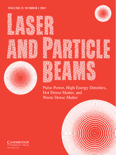
LASER AND PARTICLE BEAMS
metrics 2024
Empowering Scientific Progress in Laser Applications
Introduction
LASER AND PARTICLE BEAMS is a distinguished peer-reviewed journal published by Hindawi Ltd, specifically focusing on the fields of atomic and molecular physics, optics, condensed matter physics, and electrical and electronic engineering. With its commitment to advancing knowledge in these areas, the journal has transitioned to an Open Access model since 2021, ensuring that research findings are readily accessible to the global scientific community. Covering an extensive publication history from 1983 to 2023, it serves as an important platform for researchers, professionals, and students interested in the latest developments and applications of laser technologies and particle beam methodologies. Although currently categorized in Q4 for two of its areas and Q3 for electrical engineering in the 2023 base metrics, LASER AND PARTICLE BEAMS is positioned to foster innovative research and discussions within the laboratory and applied settings, contributing significantly to advancements in its respective disciplines. The journal encourages contributions that push the boundaries of knowledge and seeks to attract a diverse array of submissions to enhance its impact in the scientific community.
Metrics 2024
 0.22
0.22 1.10
1.10 1.10
1.10 54
54Metrics History
Rank 2024
Scopus
IF (Web Of Science)
JCI (Web Of Science)
Quartile History
Similar Journals

Annual Review of Nuclear and Particle Science
Exploring the Frontiers of High-Energy PhysicsAnnual Review of Nuclear and Particle Science is a prestigious journal published by Annual Reviews, focused on the fields of nuclear and high-energy physics. With an impressive impact factor that reflects its authority and influence—ranked Q1 in its category and holding a commendable Scopus rank of #2 out of 87, placing it in the 98th percentile—the journal serves as an essential resource for researchers, professionals, and advanced students alike. Covering pivotal developments and comprehensive reviews in nuclear and particle physics since its inception in 1978, this journal offers unparalleled insights into cutting-edge research and theoretical advancements. While it is not open access, the value of its scholarly content is evidenced by its rigorous peer-review process and its role in shaping contemporary discourse within the scientific community. With contributions from leading experts and a commitment to disseminating foundational and emerging theories, the Annual Review of Nuclear and Particle Science is indispensable for those seeking a deep understanding of the complexities in these dynamic fields.
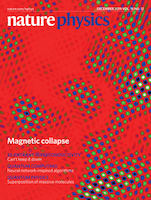
Nature Physics
Pioneering Research that Shapes Our Understanding of NatureNature Physics is a premier journal dedicated to publishing high-impact research in the realm of physics, brought to you by the esteemed NATURE PORTFOLIO. With its ISSN 1745-2473 and E-ISSN 1745-2481, this journal has established itself as a vital resource for the physics community, enjoying a remarkable Q1 quartile ranking in the Physics and Astronomy category for 2023 and securing an impressive Rank #5/243 and a 98th percentile ranking in Scopus. Since its inception in 2005, Nature Physics has become a catalyst for innovation, featuring cutting-edge research that encompasses a broad spectrum of physics disciplines. Although it operates under traditional subscription models, it maintains a commitment to accessibility through selective publications and editorial excellence. Positioned in Berlin, Germany, this journal is a must-read for researchers, professionals, and students who seek to stay at the forefront of advancements in physics.
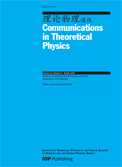
COMMUNICATIONS IN THEORETICAL PHYSICS
Pioneering research for a deeper understanding of physical laws.COMMUNICATIONS IN THEORETICAL PHYSICS is a distinguished journal published by IOP Publishing Ltd, focusing on the broad and evolving field of theoretical physics. With an ISSN of 0253-6102 and an E-ISSN of 1572-9494, this journal provides a platform for the dissemination of innovative research that contributes to the understanding of complex physical concepts. Situated in the United Kingdom, it has established itself as a pivotal resource from 1996 to 2024, achieving a commendable Q2 ranking in the category of Physics and Astronomy (miscellaneous) for 2023. With a Scopus ranking of #18 out of 81 in its category, demonstrating a 78th percentile, this journal plays a crucial role in enhancing scholarly communication among researchers, professionals, and students alike. Although it does not currently offer Open Access options, the journal's comprehensive scope and commitment to high-quality peer-reviewed research underline its significance in the scientific community, making it an essential reading for anyone engaged in theoretical physics.

Physical Review Accelerators and Beams
Empowering Researchers with Open Access KnowledgePhysical Review Accelerators and Beams, published by the American Physical Society, is a leading open-access journal dedicated to advancing the understanding of accelerators and beams, integral components of modern physics research. Established in 2016, this journal has quickly become a critical resource for researchers, professionals, and students in the fields of Nuclear and High Energy Physics, and Physics and Astronomy. The journal boasts a commendable impact factor and has achieved a Q2 ranking in reputable categories, reflecting its significant contribution to the field. With a commitment to open access, scholars can freely access a wealth of high-quality research articles that not only report on technological advancements but also explore novel experimental techniques and theoretical frameworks. The journal’s interdisciplinary approach and emphasis on rigorous peer-reviewed research make it an essential platform for disseminating innovative ideas, thus driving forward the frontiers of particle acceleration and related technologies. Located at One Physics Ellipse, College Park, MD 20740-3844, United States, it continues to cultivate a vibrant scientific community.

JOURNAL OF RUSSIAN LASER RESEARCH
Navigating the Frontiers of Laser ApplicationsThe Journal of Russian Laser Research, published by Springer, stands as a vital resource for researchers and professionals in the fields of atomic and molecular physics, as well as optics and engineering. With its ISSN 1071-2836 and E-ISSN 1573-8760, this journal has been disseminating groundbreaking research since its inception in 1994, with a dedicated focus on the advancement of laser technologies and their applications. While it currently holds a Q4 classification in both Atomic and Molecular Physics and Engineering categories, its commitment to fostering novel insights and innovative methodologies positions it as a promising platform for emerging studies within these disciplines. Although the journal does not offer open access options, it continues to draw attention with a growing citation index. By publishing diverse research articles, reviews, and critical discussions, the Journal of Russian Laser Research not only enriches academic literature but also serves as a stepping stone for students and professionals seeking to deepen their understanding of laser science and its myriad applications.
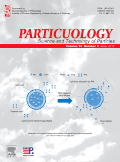
Particuology
Pioneering Research in Particle Science and EngineeringParticuology is a premier international journal published by Elsevier Science Inc, focusing on the critical advancements in the fields of *Chemical Engineering*, *Condensed Matter Physics*, and *Materials Science*. As a Q2 journal in its respective categories for 2023, it offers a platform for researchers to disseminate their findings and engage with the latest developments in particle technology and related areas. With an impressive Scopus rank of 71/273 in General Chemical Engineering and 122/463 in General Materials Science, Particuology is positioned at the forefront of scientific inquiry and innovation. The journal encourages open access, ensuring that groundbreaking research is available to a global audience, thus fostering collaboration and knowledge sharing among academia and industry professionals. With a publication history dating back to 2008, Particuology continues to shape the future of particle science and engineering by providing rigorous peer-reviewed content that reflects the highest standards of academic excellence.

Physics of Particles and Nuclei Letters
Unveiling the Mysteries of Particles and NucleiPhysics of Particles and Nuclei Letters, published by PLEIADES PUBLISHING INC, serves as a pivotal platform for the dissemination of cutting-edge research in the domains of particle and nuclear physics. With an ISSN of 1547-4771 and an E-ISSN of 1531-8567, this journal has been actively contributing to the scientific community since its inception in 2006 and continues to be influential, with a convergence period extending to 2024. While its open access options are limited, the journal is recognized for its rigorous peer-review process and commitment to quality, as reflected in its Scopus rankings across multiple categories, including a Q3 in Nuclear and High Energy Physics and Radiation in 2023. The journal is positioned to be a vital resource for researchers aiming to bridge theoretical understanding with practical applications in these highly specialized fields, fostering advances that resonate within atomic and molecular physics, radiology, and beyond. Its relevance continues to grow as the global scientific community seeks innovative solutions to complex problems in modern physics.
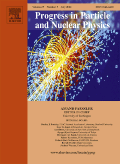
PROGRESS IN PARTICLE AND NUCLEAR PHYSICS
Fostering Excellence in Scientific InquiryPROGRESS IN PARTICLE AND NUCLEAR PHYSICS is a prestigious academic journal published by Elsevier, focusing on the dynamic fields of particle and nuclear physics. Established in 1978 and continuing through 2024, this journal is recognized for its significant contributions to the scientific community, holding a Q1 ranking in Nuclear and High Energy Physics and topping the Scopus ranking in its category. With an impactful platform that encourages the dissemination of groundbreaking research, it attracts a diverse readership of researchers, professionals, and students eager to explore the latest advances in these fields. The journal is headquartered in Amsterdam, Netherlands, and provides an essential resource for those seeking to understand complex phenomena in particle and nuclear science. Although it does not offer Open Access options, it continues to uphold a reputation of excellence and rigor, making it a vital source of information in its domain.
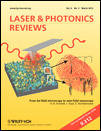
Laser & Photonics Reviews
Empowering Researchers with Cutting-Edge DiscoveriesLaser & Photonics Reviews is a prestigious academic journal published by WILEY-V C H VERLAG GMBH, based in Germany. Since its inception in 2007, the journal has rapidly established itself as a leading outlet in the fields of Atomic and Molecular Physics, Condensed Matter Physics, and Electronic, Optical, and Magnetic Materials. With its impressive impact factor and presence in the Q1 category across multiple relevant disciplines, it ranks among the top-tier journals in its field—ranked #18 out of 434 in Condensed Matter Physics and #13 out of 224 in Atomic and Molecular Physics according to Scopus rankings. The journal emphasizes high-quality research that contributes significantly to theoretical and applied photonics, bridging gaps between fundamental science and practical applications. Although access is not open, it remains essential reading for researchers, professionals, and students eager to stay abreast of groundbreaking advances and applications in laser technology and photonics. For further information and to explore its compelling articles, please visit its official site.

CHINESE JOURNAL OF LASERS-ZHONGGUO JIGUANG
Connecting Scholars Through Laser ScienceCHINESE JOURNAL OF LASERS-ZHONGGUO JIGUANG is a premier academic publication dedicated to the fields of Atomic and Molecular Physics, Optics, and Electrical and Electronic Engineering. Established in 1991 and published by the esteemed CHINESE LASER PRESS, this journal serves as a crucial platform for researchers, professionals, and students to disseminate significant findings and innovations in laser technology and applications. With its consistent Q3 ranking in the respective categories, the journal is recognized for contributing valuable insights into electronic, optical, and magnetic materials, as well as advancing the understanding of laser phenomena. Although open access options are not available, the journal remains committed to fostering academic discourse and enhancing the visibility of groundbreaking research within and beyond China. The periodical is not only pivotal for those engaged in laser science but also for interdisciplinary studies that intersect with physics and engineering, making it an essential resource for contemporary scholars.